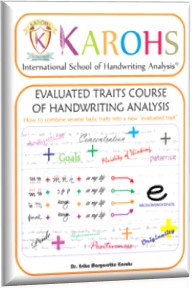Free Article about Handwriting Analysis
From “Sunday Lessons III”
- Sunday Lesson #12: Non-Manager Discussions
By Dr. Erika M. Karohs
THE NON-MANAGER
“The word manager,” says Fervers (German graphologist), “holds a kind of magic. It symbolizes power, wealth, status and influence. Not surprisingly, many people seem to believe that, ideally, they should become managers, regardless of their qualifications – or lack of it.”
According to Fervers graphologists receive many requests to evaluate applicants for management qualifications and learned dissertations dealing with the identification of management potential in handwriting abound. What most graphologists seem to overlook, however, is the fact that they could learn just as much or more from the handwritings of so-called non managers.
Fervers hastens to add that the classification no manager does not constitute a negative value judgment because graphology neither glorifies individual nor does it condemn. The true function, according to Fervers, is to assess personality as seen in the handwriting. He adds somewhat sheepishly that managers may well be the gods of industry, but this does not necessarily mean that they are always great human beings.
The following handwriting indicators are typical for non managers. The more of these traits are in evidence, the less qualified is the applicant for a management position.
- Slow writing
An individual who slowly executes each letter formation will find it difficult to keep up with the hectic pace of the business world. He needs time to gather data and weigh information. He may become irritated when forced to deal with faster individual and his mind tends to go blank under pressure. When he does something on impulse, it is usually an emotional response. Such an emotional reaction prohibits real thinking in the moment and he usually regrets his impulsive behavior later.
- Extreme disconnectedness
In interpersonal relationships, such individuals are contact-shy. They shun involvement on the emotional level. They reject close relationships and show little interest in others emotional responses and needs.

- Ostentatious elaborations
Overdone elaborations are used by individuals who tend to exaggerate. Their exaggerations are artificial and unnatural and reality escape them when this is happening. They are not aware, much of the time, how far they are going. Frequently, they are trying to bluff; however, they will be unable to carry through and deliver what they lead others to believe.
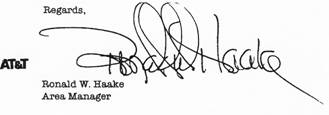
- Left tending indicators
Left tendency indicates that the writer is introverted and withdrawn. He tends to retreat into the past for feelings of security. He shuns risk taking activities and needs to feel secure before going ahead. He needs much encouragement while undertaking anything that is not familiar. Apprehension often causes him to limit himself unnecessarily.

- Step-down alignment
This is evidence that the writer is involved in constant struggle against feelings of melancholy. He overcomes negative moods temporarily, only to be defeated again. In every case, the efforts surpasses the writer’s energy and he experiences inner conflicts and much frustration.

- Higher final hump in letters m and/or n
This indicator shows that the writer feels tense and ill at ease in the presence of others and particularly in new or unfamiliar situations.
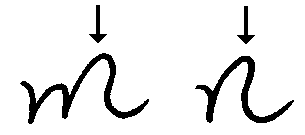
- Lower loops bending leftwards
These individuals are fearful and dependent. They need encouragement and help to perform adequately. In order to feel more adequate, they withdraw from people they consider superior to them. They prefer to associate with people who seem less capable than or less important they, themselves, appear to be.

- Extremely broad spaces between words and baselines
This formation exposes the writer who has isolated himself emotionally and interpersonally. Wagner speaks of the “fear of being touched and the tendency to keep people at arm’s length.”Such individuals dislike people who stand to close when talking and who try to touch and hold. They are uncomfortable in the presence of large crowds and uneasy in every-day social relationships. They have difficulty with people who make demand or cling to them. They life is isolated with few people allowed to share their personal experiences. “In a sense,” muses Wagner, “they are onlookers, observers, rather than participants in active living.”

- Horizontal stroke crossing out the initial of the first or last name
This is called a “stroke through the writer’s life” by European graphologists. The leftward movement connotes fear and cancels out the writer’s original initiative. And by crossing out part of the individual’s name, it symbolically annihilates the writer himself.

In conclusion, Fervers advises against doing a management evaluation based solely on the graphological indicators of non managers. However, familiarity with these indicators is invaluable because the knowledgeable graphologist can select qualified as well as eliminate unqualified candidates with greater ease and accuracy.
The Non Manager
| TRAIT |
| 1. Slow writing |
2. Extreme disconnectedness |
3. Ostentatious elaborations |
4. Left tending indicators |
5. Step-down alignment |
6. Higher final hump in letters m or n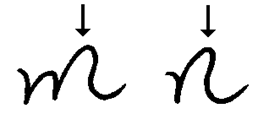 |
7. Lower loops bending leftwards |
8. Extremely broad spaces between words and baselines  |
9. Horizontal strokes crossing out initial of first or last name. |
The Non Manager Worksheet
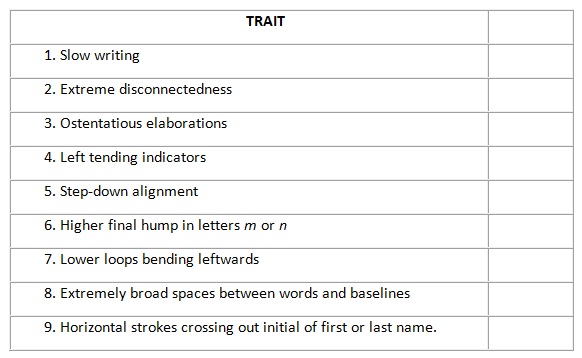
I hope you are enjoying this exercise and feel that you are learning from it.
Best regards,
Erika M. Karohs, Ph. D., Ed. D.
- Hans Fervers, Der Nicht – Manager, in Beatrice von Cossel, Graphologisches Spektrum ’72 (Frankfurt/Main: dipa Verlag Kurt Werner, 1972), p. 44.
- Some of the traits for non managers listed above are by Fervers. Additional traits have been listed by Erika M. Karohs according to specifications by the AMA (Amercian Management Association).
- For detailed information see: Erika M. Karohs, Inner Circle paper “Speed in Handwriting.”
- Wagner uses the German expression “sich die Leute vom Leibe halten,” which means literally to keep people away from one’s body. (Lutz Wagner, Graphologische Forschungen (Wien: Verlag Wilhelm Braumüller, 1973), p. 69).
See detail courses programs (click the image below):
Copyright © 2018 the KAROHS International School of Handwriting Analysis®. All rights reserved.
No image or portion of this website may be copied or reproduced without written permission.
How To Hire The Best Candidate Every Time
During interviews, job candidates will show courtesy and friendliness, an eager attitude, a remarkable resume, and immaculate references. They will hide evidence of slovenly work habits, lack of motivation, refusal to obey rules, the habit of failing to meet deadlines, stubbornness irritability, temper, difficulties in getting along with others and duplicity. How To Hire the Best Candidate Every Time is a unique tool to uncover a candidate’s true personality. Once you put this knowledge to use, you will know with certainty which candidates to choose and which to avoid. Whether you are the boss or a graphological consultant, you will be truly able to select the best candidate every time.
Info : 1 Volume; 73 Pages Price : $ 27
HOME
Click here to back to KAROHS Home Page
COURSE
Click here to see our Course Programs
BOOKS
Click here to see our Books Store
Copyright © 2018 the KAROHS International School of Handwriting Analysis®. All rights reserved.
No image or portion of this website may be copied or reproduced without written permission.




